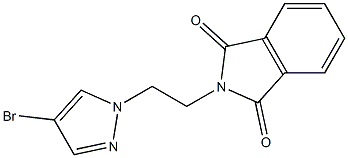beta-(1,3)-D-Glucan
Synonym(s):β-Glucan, Saccharomyces cerevisiae - CAS 9012-72-0 - Calbiochem
- CAS NO.:9012-72-0
- Empirical Formula: C18H30O14X2
- Molecular Weight: 470.42
- MDL number: MFCD00466918
- EINECS: 232-739-1
- SAFETY DATA SHEET (SDS)
- Update Date: 2024-11-28 18:20:31

What is beta-(1,3)-D-Glucan?
Chemical properties
sodium hydroxide soluble fraction
The Uses of beta-(1,3)-D-Glucan
beta-(1,3)-D-Glucan is reported to enhance the skin’s natural defense mechanism, which becomes less effective with age and exposure to uV light. It is also credited with wound-healing properties and it promotes cellular activity; serves as a topical moisturizer with long-lasting moisturizing effects; reduces wrinkles; helps protect the skin from infection; and protects the skin from invasion by toxic agents caused by pollution and injuries due to abrasions, exposure to uV light, and extremes in climatic conditions. In addition to this impressive list, polyglucans are credited with immunostimulatory properties. A polyglucan is a hydrophilic ingredient, able to absorb more than 10 times its weight in water. It can be absorbed into the outer layers of the epidermis, thereby facilitating penetration into the pores and follicular openings of the skin. once applied on the skin, it forms a protective, hydrated film with superior adhesive properties that does not appear to interfere with normal skin respiration. These film-forming and protective properties are particularly valuable for aging skin suffering from diminished collagen and elastin, as well as impaired hydration and elasticity. Derived from yeast cell walls, polyglucans are compatible for formulation with all normally used skin care and other cosmetic ingredients.
What are the applications of Application
b-Glucan, Saccharomyces cerevisiae is a major structural element of the yeast cell wall
Definition
Glucosan: any one of a class ofpolysaccharide compounds that canbe converted to glucose by hydrolysis.Glucosans include dextrin, starch,and cellulose.
Properties of beta-(1,3)-D-Glucan
| Melting point: | 108-109 °C |
| storage temp. | 2-8°C |
| solubility | H2O: 20 mg/mL, clear, faintly yellow |
| form | powder |
| color | Light yellow to Brown |
| CAS DataBase Reference | 9012-72-0(CAS DataBase Reference) |
Safety information for beta-(1,3)-D-Glucan
Computed Descriptors for beta-(1,3)-D-Glucan
New Products
Tert-butyl bis(2-chloroethyl)carbamate 4-Methylphenylacetic acid N-Boc-D-alaninol N-BOC-D/L-ALANINOL 3-Morpholino-1-(4-nitrophenyl)-5,6-dihydropyridin- 2(1H)-one Furan-2,5-Dicarboxylic Acid Tropic acid 1,1’-CARBONYLDIIMIDAZOLE DIETHYL AMINOMALONATE HYDROCHLORIDE R-2-BENZYLOXY PROPIONIC ACID 1,1’-CARBONYLDI (1,2-4 TRIAZOLE) N-METHYL INDAZOLE-3-CARBOXYLIC ACID (2-Hydroxyphenyl)acetonitrile 4-Bromopyrazole 5-BROMO-2CYANO PYRIDINE 5,6-Dimethoxyindanone 5-broMo-2-chloro-N-cyclopentylpyriMidin-4-aMine 2-(Cyanocyclohexyl)acetic acid 4-methoxy-3,5-dinitropyridine 2-aminopropyl benzoate hydrochloride 1-(4-(aminomethyl)benzyl)urea hydrochloride diethyl 2-(2-((tertbutoxycarbonyl)amino) ethyl)malonate tert-butyl 4- (ureidomethyl)benzylcarbamate Ethyl-2-chloro((4-methoxyphenyl)hydrazono)acetateRelated products of tetrahydrofuran








You may like
-
 Glucan from Black Yeast CAS 9012-72-0View Details
Glucan from Black Yeast CAS 9012-72-0View Details
9012-72-0 -
 Beta Glucan CAS 9012-72-0View Details
Beta Glucan CAS 9012-72-0View Details
9012-72-0 -
 1975-50-4 98%View Details
1975-50-4 98%View Details
1975-50-4 -
 2-HYDROXY BENZYL ALCOHOL 98%View Details
2-HYDROXY BENZYL ALCOHOL 98%View Details
90-01-7 -
 2-Chloro-1,3-Bis(Dimethylamino)Trimethinium Hexafluorophosphate 221615-75-4 98%View Details
2-Chloro-1,3-Bis(Dimethylamino)Trimethinium Hexafluorophosphate 221615-75-4 98%View Details
221615-75-4 -
 14714-50-2 (2-Hydroxyphenyl)acetonitrile 98+View Details
14714-50-2 (2-Hydroxyphenyl)acetonitrile 98+View Details
14714-50-2 -
 118753-70-1 98+View Details
118753-70-1 98+View Details
118753-70-1 -
 733039-20-8 5-broMo-2-chloro-N-cyclopentylpyriMidin-4-aMine 98+View Details
733039-20-8 5-broMo-2-chloro-N-cyclopentylpyriMidin-4-aMine 98+View Details
733039-20-8